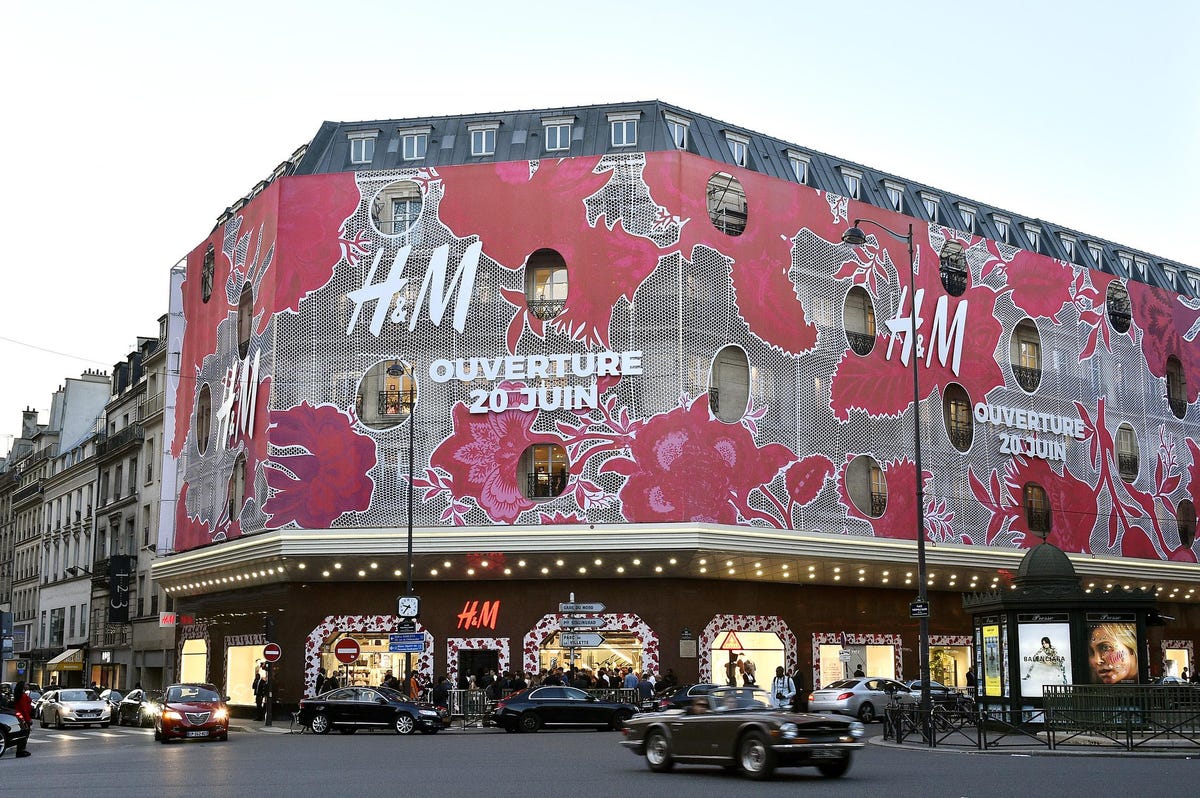
H&M is not quite ready for the metaverse as fashion retailer denies CEEK rumors. (Photo by Kristy … [+]
H&M’s apparent flirtation with the metaverse lasted all of two days, it would appear. This week opened with reports that the global fast fashion retailer had entered into a tie-up with CEEK to sell virtual fashions in the metaverse.
By Wednesday, H&M had denied the reports although, intriguingly, the Swedish fashion giant’s spokesperson left the prospect hanging, saying: “We’d like to confirm that H&M is not opening a store in metaverse at this time. We are also not collaborating with CEEK.”
‘At this time’…that rather open phrase left enough skin in the game to keep the conspiracy theories running. So what’s the actual story?
It all began as far back as Monday, when reports emerged from India claiming that H&M had announced that it would offer its customers a three-dimensional shopping experience in its virtual store in the metaverse via CEEK City.
The reports said that customers would be able to walk through the store, choose the apparel they wanted and purchase it in the CEEK City universe, though the clothes could only be worn in the digital environment. Payment would be made by CEEK coin and customers would also have the opportunity to order the same apparel from H&M’s physical stores later.
CEEK Metaverse Coin Project
So what is CEEK? Launched in 2018, CEEK is a metaverse coin project built on the Ethereum blockchain, which “connects artists, athletes and other digital content creators directly with their fans in virtual worlds”. CEEK’s NFT Marketplace is designed to enable real ownership of digital items that will pass through multiple digital reality environments, host digital currency, global payments and applications.
MORE FOR YOU
CEEK’s virtual reality spaces run on smart contracts through the Binance Smart Chain and the fully diluted market cap of CEEK coins stands at a little more than $700 million. There are over 744 million CEEK coins in supply, with the maximum supply capped at one billion coins. Briefly peaking at $1.16 a year ago after launching at around 4 cents, it is currently trading at around $0.60.
Kendall Jenner walks the runway for Giambattista Valli Loves H&M: Sales are back at pre-pandemic … [+]
H&M – which operates across 75 markets with nearly 5,000 stores and has an online presence in 53 – moved to deny the rumors on Wednesday, following a Dec. 7 Tweet by CEEK’s official Twitter account in which the company said it had created a “concept VR store” to be presented to H&M.
The official Twitter account for CEEK subsequently clarified Monday: “The H&M store in the CEEK metaverse was just a concept that was presented to H&M and not an actual virtual store yet. We are in discussions with people at H&M to make this a reality, but this is not something that’s a reality as of now.”
H&M Final Quarter Sales Rally
The news comes as H&M sees its fortunes on the up after a rocky 18 months, as stores across the world faced closures and restrictions in the wake of the pandemic.
Last month H&M said its sales in local currencies September thru November matched levels achieved pre-pandemic, with net sales up 8% year-on-year at $6.22 billion in the period, H&M’s fiscal fourth quarter. Measured in local currencies, sales were up 11%.
“Despite continued restrictions and the negative consequences of the pandemic, the H&M group’s sales in local currencies were back at the same level as in the fourth quarter of 2019,” the company said in a statement. “Customers are showing that they appreciate the collections and being able to shop where, when and how they choose.”
At the end of November, around 115 H&M stores were temporarily closed because of restrictions, mainly in Austria and Slovakia. At the start of the quarter, about 100 had been closed, mainly in southeast Asia.
In October, H&M’s Mitte Garten location and circular fashion platform Iablaco rolled out a rental service focused on connected and digitized circular fashion, allowing customers to book and pay for apparel with one click on the new platform, then return the item to the Berlin store to be checked, cleaned and prepared for the next renter.
H&M is due to publish its full fourth-quarter earnings report on Jan. 28.







